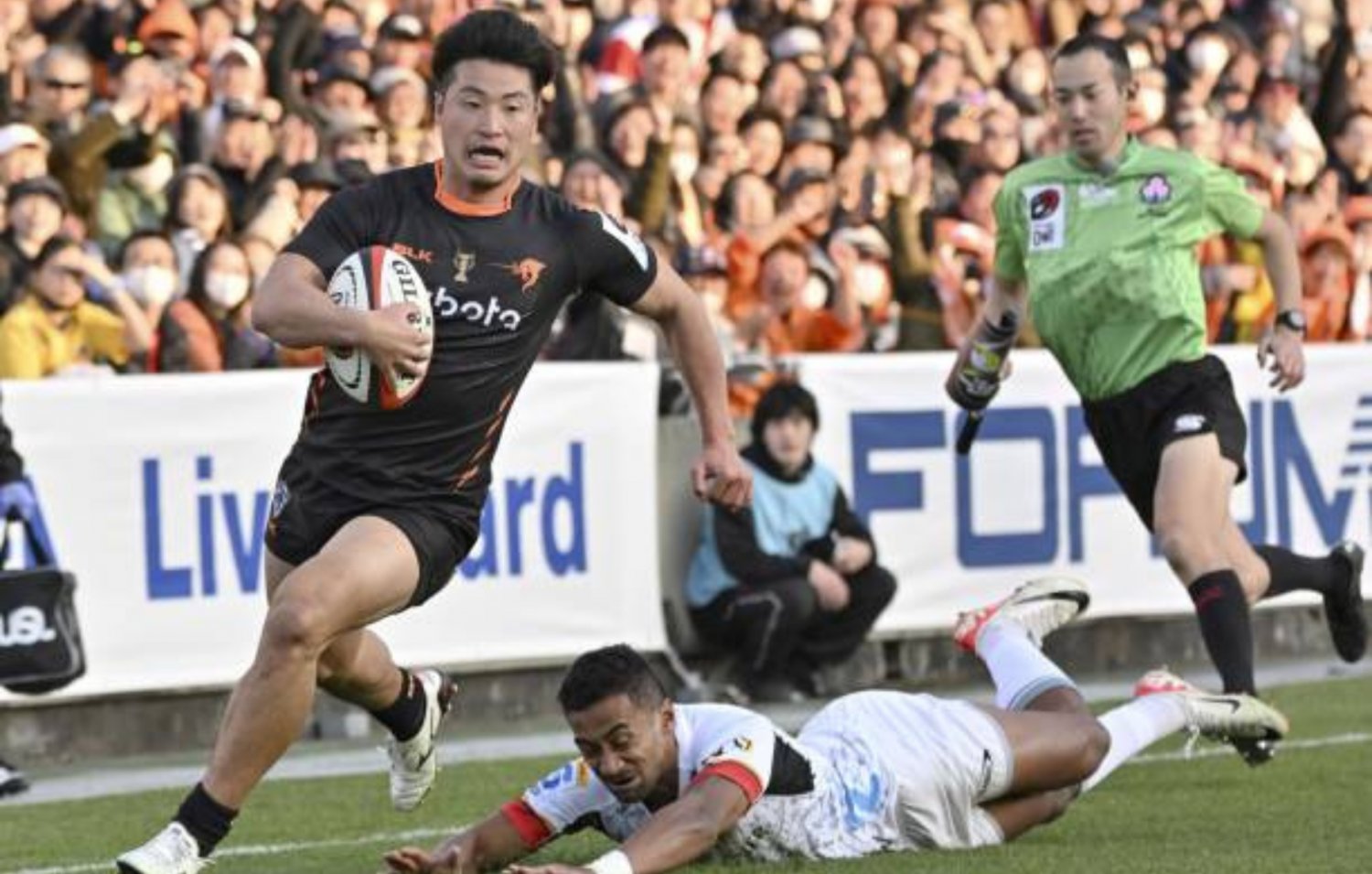Bright Future for The Cross Border Rugby
- 2555

Japan Rugby League One chairman Genichi Tamatsuka believes the future of the recently completed The Cross-Border Rugby between local clubs and their New Zealand counterparts from DHL Super Rugby is bright.
“It was a promising start to the concept, with four entertaining games, which featured plenty of running rugby and a healthy return of tries,” Mr Tamatsuka said of the four-game series between the semi-finalists from last season’s Japan Rugby League One, along with two of the top four from Super Rugby.
Thirty-seven tries were scored at 9.25 per match, while the total points tally from the four matches was 246 at an average of 61.5 across the four contests.
“There were good results for both countries, which added to the competitive element of the series,” Mr Tamatsuka added.
The highlight for Japan was the historic victory of the Saitama Panasonic Wild Knights against last year’s finalists from Super Rugby, the Gallagher (Waikato) Chiefs.
Japan Rugby League One’s reigning champions, Kubota Spears Funabashi Tokyo Bay, getting to within five points of the Chiefs (30-35), despite fielding a young team with two of their three star internationals absent, also had plenty of merit.
The Wild Knights’ 38-14 win at Kumagaya represented the first success by a team from a Japanese club league against a New Zealand side from Super Rugby.
“The effort of the Saitama Panasonic Wild Knights in beating the Chiefs was not just a proud achievement for the club, it was also a significant moment for rugby in Japan as a whole,” Mr Tamatsuka noted.
“It was a statement that Japanese club teams can compete with their international counterparts, a further sign of the growth in the playing level that we are achieving through Japan Rugby League One.”
While acknowledging that the timing of the competition, with Japan Rugby League One having to pause to create a window for the matches was – “not ideal” – Mr Tamatsuka said he hoped The Cross-Border Rugby was only the beginning, and that a more suitable moment would be created for a formal series in the future.
“That is our ultimate objective, but everything must start somewhere. We now have something to build on,” Mr Tamatsuka said.
“The potential for growth, whether it be in the strength of player that the team’s field, expansion of the marketing and fan engagement, increased commercial opportunities that are associated with the product, the window of the season in which the games are played; all are things that can and will be looked at and advanced as we develop this relationship.”
While acknowledging that the number of fans attracted to matches was limited, with the 13,278 who attended the first game of the series between Tokyo Suntory Sungoliath and the (Auckland) Blues being the largest crowd, Japan Rugby League One chief operating officer Hajime Shoji did pinpoint the relatively short time span between the creation of the series and its implementation as a factor.
“The simple reality is that there wasn’t a lot of time to put it together,” Mr Shoji explained.
“But, as the chairman has said, it is a starting point. We now have a base of understanding to work from, both as a league, but also for the clubs.
“They now know what to expect when they earn the right to participate. When we stage a review of the series, I am sure there will be plenty of things operationally we find that can be improved.
“Japan Rugby League One is built on traditional club competitions that have been in place for a long time, they are rivalries that the fans have invested in, want to be a part of.
"Given the feedback from fans after the matches, I believe the Cross-Border Rugby, once developed to an improved format, will soon get more popularity among the fans in Japan."
While the lower sections of Japan Rugby League One played through The Cross-Border Rugby, Division One will resume with two matches on Saturday.
The competition final, which attracted 42,000 fans last year, will be played at the National Stadium in Tokyo on May 26.














